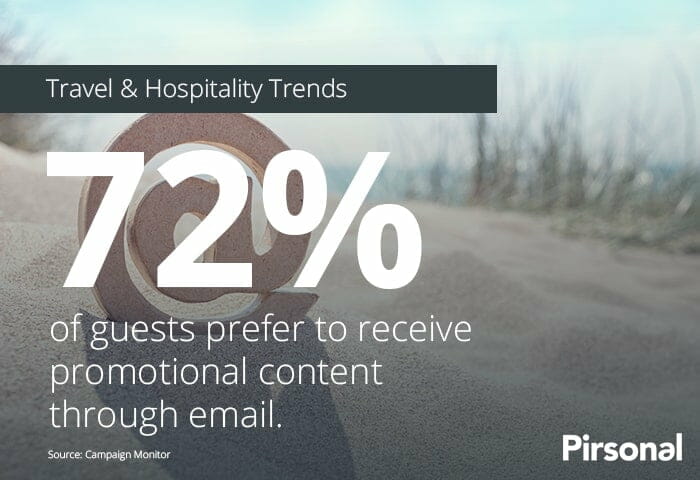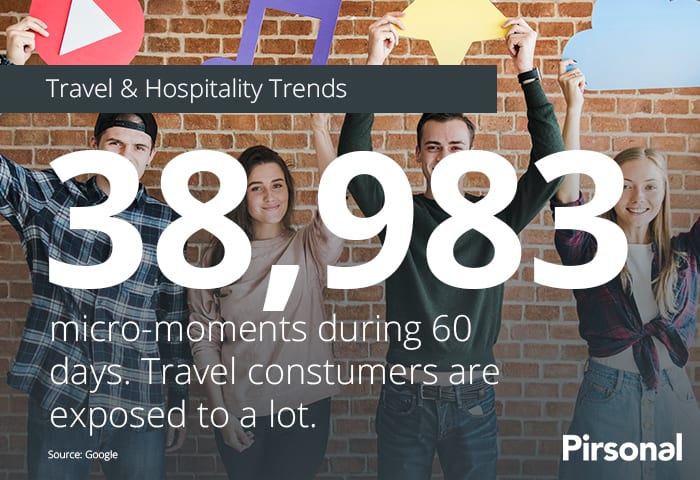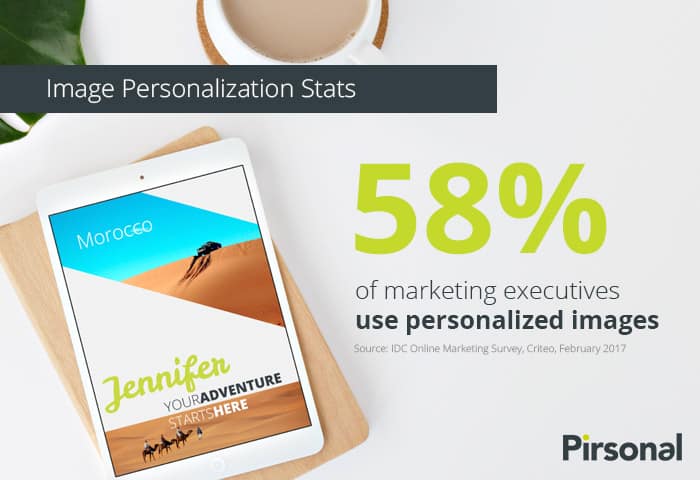Hotel marketing has become a battle or even a war for relevancy, with guest engagement at its heart. This relevancy makes it imperative to choose the guest engagement channel that marketers can use to boost their marketing communication, based on customer segments. At the same time, this relevancy starts from the inside and expands to groups, then segments then individuals, the sweet spot for marketing personalization.
The best engagement channels for hotel marketings are those where hotel marketers get the higher responses or conversions with the maximum ROI. According to Gallup, Hotel guests who are fully engaged spend 46% more per year than actively disengaged guests.
In this article, I’ll summarized the best channels to engage with guest in the hospitality industry. The hotel industry has been one of the hardest hit by the crisis caused by Covid19. For example, countries like Spain have been dramatically damaged. This reinforces the need to choose the appropriate form of engagement with direct hotel guests and clients.
According to the Ministry of industry, trade and tourism of Spain, Tourism is a strategic sector for the country’s economy. It provides 12.3% of GDP and 12.7% of employment. Since the Spanish hospitality industry is one of the main engines of the world, it is key to understand how hotels can increase customer engagement through different communication channels.
In the hospitality and tourism sector, communication is not only important between customer and staff, but also used within the staffs in the organization. The communication can be stated as transmitting information or exchanging message between two or more persons.
The communication process can be done by using the method of performing word, the tone of voice or body language from one to another person. Hence, it is important that a good communication process is carried out while corresponding. With the increase in mobile devices in the workplace and the compulsion that hotels maintain GDPR compliance, bring your own device (BYOD) policies have to reflect these GDPR compliance requirements.
Consumers require relevant marketing communications that make them react. Personal data plays an important role in the hospitality, travel, and leisure industry as larger volumes of personal data from guests are processed. This also represents a huge opportunity, showcased in this free report.
It is particularly important for the hospitality sector spreader workforce, who will gradually rely on internal communications through a mobile team application. The Beekeeper is amongst one such app, a one-stop solution that meets GDPR compliance hotels can count on, helping the hospitality business to stay on top of the trends.

When talking about guest engagement for hotel marketing, email is the most preferred communication channel. It is a much more professional medium and people expect to receive information about products and services through email. For example, according to a Campaign Monitor study, around 72% of people prefer to receive promotional content through email, as compared to 17% who prefer social media.
Managers require complete and accurate information to perform their functions efficiently and effectively. If communication is not done properly, it can hamper the management of the organization. For instance, business planning requires information on available resources, the strength of competitors, government policies, and other external factors. Such information provides very important inputs for management to be able to formulate the right objectives and strategies to achieve its goal. To achieve all the above parameters communication plays a vital role.
The most common forms of communication used in the hospitality industry by type are:
- Auditory Communication: Auditory communication includes messages that are received via hearing sense. It comprises of music, words, sounds, and noises. In the hospitality industry, auditory communication can be established through different media related to activity and objectives such as: by face-to-face communication, by a phone call and radio broadcasting.
- Visual Communication: This includes messages received through sight. Sign, gesture, and images play a major role while communicating. It also contains mediums, such as complaint forms, letters, invoices, contracts, labels, and leaflets.
- Tactile Communication: This comprises messages perceived through touch sense. Through tactile sensation, affection is conveyed. Shaking hands or tapping someone’s shoulder may show some positive or negative effects, so it is essential to be respectful in this context and be aware of cultural conventions. For example, greetings at meetings and negotiations are amongst the different mediums involved in it.
- Multichannel Communication: These messages are received through various senses at a time. Television, video, and specially personalized video, and computer are few mediums through which this is possible. In fact, take a look at these stats for hotel video marketing.
ROI of communication channels in the hospitality industry
Return on Investment (ROI) varies from company-to-company and from region-to-region. Unvaryingly, the final decision depends on the company’s gearing and the investor’s risk profile. The average IRR for hotel investments in Europe ranges from 12.4% to 16.1% with an average of 14%. The majority of marketers believe that social media communication channel as a whole has helped their businesses though they cannot quantify its exact impact.
Benefits of incorporating social media as part of a hotel marketing strategy:
- Increased exposure
- Growing website traffics
- Developing fan following
- Generating sales leads
- The rise in business partnerships
- Advancing sales
According to a survey to CMOS, businesses are spending around 12% of their marketing budgets on social efforts. This number is expected to increase by around 20% over the next five years. This is attributed to growing brands and their presence across multiple platforms.
This survey stated: around 28% of marketing agencies state, they struggle to measure social ROI, 55% marketing agencies can measure social ROI, and around 17% marketing agencies agree that they can accurately quantify the revenue impact of social media.
The major challenges related to ROI are:
- Inability to tie social to business outcomes
- Lack of analytics expertise and/or recourses
- Poor measurement tools and platforms
- Inconsistent analytical approaches
- Unreliable poor/data
Social media done right for hotel marketing can be a powerful tool to drive more direct sales. Take a look at the TripBarometer 2017/2018 below to better understand how social media can help. Take for example what they describe as Beachgoers (page 66). Half of them share on social media. We recently did a webinar with Guillermo Fernandez from Pattterns where he talked about the impact of image data science on booking reservations for hotels in Riviera Maya and how unique images that reflect the uniqueness of Riviera Maya were able to generate more conversations around the hotels and more sales.
https://www.slideshare.net/Pirsonal/tripbarometer-20172018-for-hotel-marketing-strategies
The most used communication channels by spent in the hospitality industry
Currently, the hotel’s technology spending in particular due to the shrink in the hotel’s IT budget. Hoteliers currently are focused on spending more on technology as compared to previous years, approximately 3.5% of overall revenues were allocated to IT spending in 2016, a decrease with 6% in 2015. Hotels are now focused on enabling digital consumer engagement, with 52% aiming technology as their priority. Around 56% aims at driving more direct reservations, and 56% concentrating on improving guest analytics, as a top Business Intelligence goal.
According to a 2016-2017 Gartner Research study, companies are now spending around more than 12% of annual revenue on overall marketing. It is stated that larger companies (more than 5 billion revenue) spend 13% of revenue on marketing, while smaller companies (USD 250 million to USD 500 million revenue) spend roughly around 10% of annual revenue.
The most used communication channels by engagement in the hospitality industry
Globally, the number of mobile device subscriptions is growing exponentially over the past period. In 2016, there were around 4.8 billion unique mobile subscribers, and 65% of the world’s population. It is estimated that there will be 5.7 billion mobile subscribers, representing a mobile phone penetration rate of 73%. The increase in usage of the mobile device has transformed the travel and tourism industry, as travel bookings are majorly done through mobile devices. Guest engagement has begun to shift towards mobile platforms, and global interconnectivity of mobile devices makes them a suitable platform for commerce.
Similarly, social media usage is rising. It is observed that digital consumers are spending more time on social networks and messaging platforms than ever before. It is thus important for hotels to have a brand presence and a marketing effort on social media channels, especially since social media marketing has proven to be more effective than traditional marketing (when utilized correctly). Social media marketing allows for two-way communication between consumers and customers. This interactive element helps companies hold a long-term customer for a more robust hotel marketing strategy. Moreover, social media marketing supports the real-time promotion of new products and services, all while processing consumer data that can be further used to target, engage, and grow a base of consumers.
What communication channel delivers the best conversions in the hospitality industry?
As the travel industry is growing continually and becoming increasingly more complex, hotel marketers are focusing on more innovative ways to engage and retain their best potential guests. According to Google, the online travel customer is exposed to over 38,983 micro-moments in any 60-day timeframe, through which they visit an average of around 18 websites via multiple devices in eight sessions before booking a hotel. The major factors impacting hotel website conversion rates include market parity, rate parity, and quality of website and user experience due to growing competition between the OTAs and Hoteliers. On other hand, factors such as risk/investment, increase in choices, poor platforms, confusing offers, and ancillary services are hampering the hotel conversion rates.

The average hotel website conversion rate (bookings divided by unique monthly visitors) is typically below 2%. For example, imagine 100 people visit your hotel website. Out of which, less than two will make a booking, and more than 98 will look around before leaving to make a booking somewhere else either with your competitors or with the OTAs. In addition, hoteliers are spending dollars on SEO, online media, paid search, PR, and social media to bring users to the hotel website. Though, 98% of them are not converting. On balance, it’s easier and inexpensive to generate more revenue from the existing traffic than to get more viewers to the site. Furthermore, attaining even a slight conversion rate increase can create a huge impact on a hotel’s bottom-line.

The travel industry has below average conversion rates, according to data from Smart Insights. For travel and hospitality, the average conversion rate was 2.4% as compared to 2.6% for the retail. Though, for travel websites that depend heavily on affiliate metasearch traffic, conversion rates are a bit higher, approximately above 4%.
For example, in-house marketers who are personalizing their web experiences see on average a 19% uplift in sales, email marketing regularly sees a whopping 440% ROI when implemented effectively, or 44 dollars for every dollar spent, and personalized videos deliver a CTR that is higher than that of generic video by 164% as well as a 116% uplift in conversion. Actually, here is a great webinar about how to boost hotel sales and guest loyalty with personalized video marketing:
The factors influencing booking conversion rates include:
- Price: this is a major factor, having competitive rates and providing a better rate to book directly on the website
- Traffic Source: more appropriate the traffic, the higher is the conversion rate
- Conversion rates by devices: approximately, 11% of bookings are made from mobile for brand-site, and 61% of bookings on mobile are through OTA mobile site
- Conversion rate by location
- Conversion rate by ADR and Rate Strategy
- Website user experience
- Conversion assistants: Widgets, A 15% increase in conversion can be expected
- Trust: Reviews can help in growing the conversion rate
- Service: Better service will encourage conversions, particularly if something unique is offered on the website
Guest and Customer Segmentation For Hotel Marketing
As revenue management practices increase in the hospitality industry, the use of marketing automation and personalization tools also grows. This helps hotel marketers to scale the marketing efforts. At the same time, it helps hotels to create marketing messages that are aligned with their segmented target audience and to the way these audiences consume information.
Understanding who your guests are will also help you to choose the right marketing engagement channel. This is why hotel marketing segmentation is important.
What is segmentation? To keep it simple, segmentation is the process used to define and create subgroups of audiences with homogenous characteristics. It is one of the first things to take into consideration when creating a marketing personalization strategy for your hotel.
With this in mind, there are 7 simple ways to create customer segments that can also be applied to the hospitality industry. Listen to the following podcast where I summarize them:
- Demographics: This one is usually the most extended among marketers. It analyzes criteria such as age, income, number of family members, race, gender, occupation, education, and nationality.
- Skills and knowledge: The things your prospects, users, and customers know and how they apply this knowledge. For example, are they amateur tennis or golf players?
- Things your target audience like about your products. For example, do they love hotel spa? What about your restaurants?
- Behavioral activities: These are the behaviors and decision-making processes followed by your guests. For example, think about how they lifestyle affects their booking process.
- Psychographics: This takes into account how your target audience thinks and divides markets according to lifestyle, personality traits, values, opinions, and interests of consumers.
- How your target audience uses your product: Do they use your product like you initially expected? When do they use it? With other people?
- How they buy your products: Similar to the behavioral activities, looking at their processes, think about how much they spend. Do they buy based on special promotions only?
As you can see, this segmentation criteria is not specific to the hospitality industry.
For example, it is critical to understand your main booking channel. Clients that buy directly through your website have different needs and wants compared to those that prefer using an OTA. Try to understand these needs and wants and use this information in your marketing messages and support channels. Anticipation is key to build trust.
Aligned with revenue management, take a closer look at how much each customer pay. Are direct guests spending the same brought by OTAs? If direct guests have more chances to spend more in your hotel, upselling and cross-selling will be very important. Unless the conversions your are very good, it is of little use to offer these messages to customers from non-direct channels if engagement is negatively affected.
And what about the average length of stay? Generally, it affects the average budget of the guests, and also the communication channel.
As you focus on finding the highest-value guests, you also need to find the engagement channel that delivers the best conversions. For example, clients from Asia or Latinoamerica may prefer using channels like WhatsApp, but customers from the Germany or the US may still prefer using email as their main engagement channel.
Conclusion
To create memorable experiences and achieve the highest conversion rates, today it is not enough to use all channels because your guests are saturated. You should focus on those channels that are relevant to your target audience, individually or at least segmented by groups with common characteristics.
In any case, use marketing personalization strategies, which will allow you to adapt the marketing messages to what each person needs to read, see or listen in order to make the next decision in their customer journey. Personalized marketing can become a key part of your hotel marketing success.
Start by studying the common characteristics of your customers and looking for patterns that allow you to put them in “buckets” based on even more specific characteristics.
Once you have done this, ask them and / or choose the communication channel that best suits their needs (and your operation).
With this, you create personalized messages based on their characteristics.
You can rely on video marketing automation with tools like Pirsonal, since personalized videos can be distributed through any digital channel. Now, if sending physical letters you get a better response rate and more sales within a specific segment, without a doubt you will have to send more letters.
